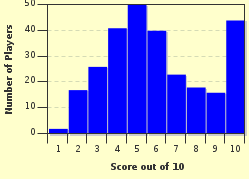Quiz Answer Key and Fun Facts
1. Possibly the most famous female spy of all time, who is the lady who spied for the Germans during WW1?
2. Anthony Blunt was a spy at the very heart of the British establishment. What post did he hold by Royal Appointment?
3. Some spies act out of strong beliefs, others for entirely different motives. What motivated CIA man Aldrich Ames?
4. Queen Elizabeth l of England had one of the widest and most sophisticated spy networks of the age. Who headed this and was known as "The Queen's Spymaster"?
5. Who was the German-born physicist who gave details of the British and American atomic bomb projects to the Soviets?
6. Who were the American husband and wife executed in 1953 for spying for the Soviets?
7. Sidney Reilly (aka Ace of Spies) is alleged to have been the basis for which fictional spy?
8. After spying on Russia for 15 years what made Victor Bogomolets turn against MI6 and start spying for Russia instead?
9. Richard Sorge was a Soviet spy before and during WW2. In which country was he arrested and executed?
10. One of the most decorated women of WW2, to whom did the Gestapo give the code name "White Mouse"?
Source: Author
StarStruck60
This quiz was reviewed by FunTrivia editor
stedman before going online.
Any errors found in FunTrivia content are routinely corrected through our feedback system.


